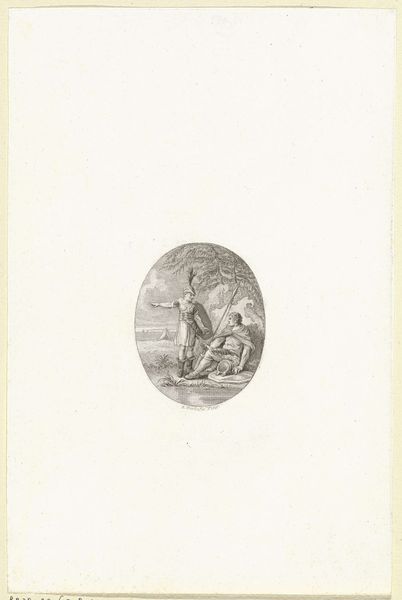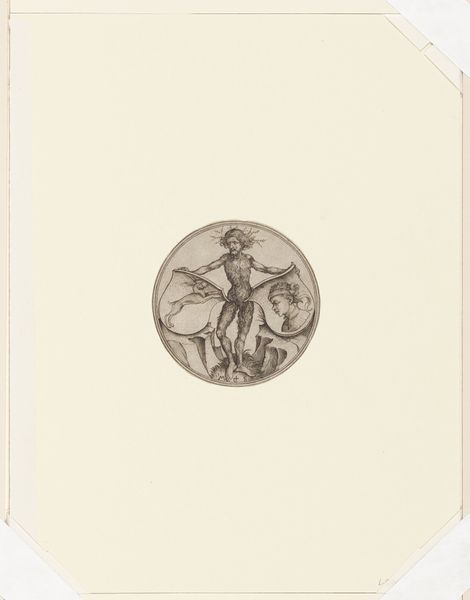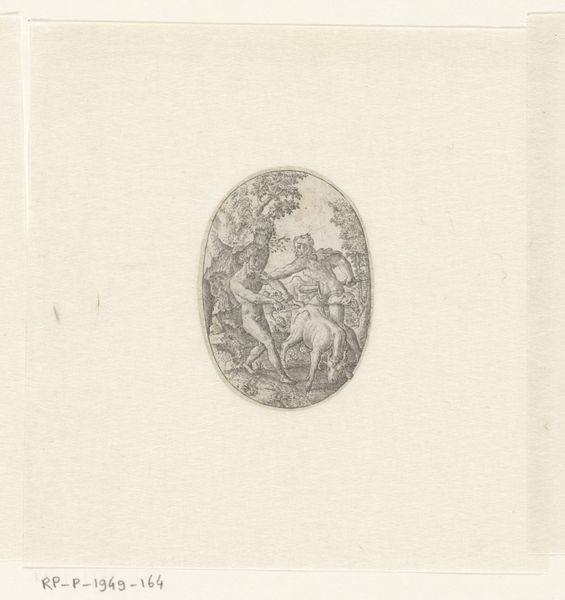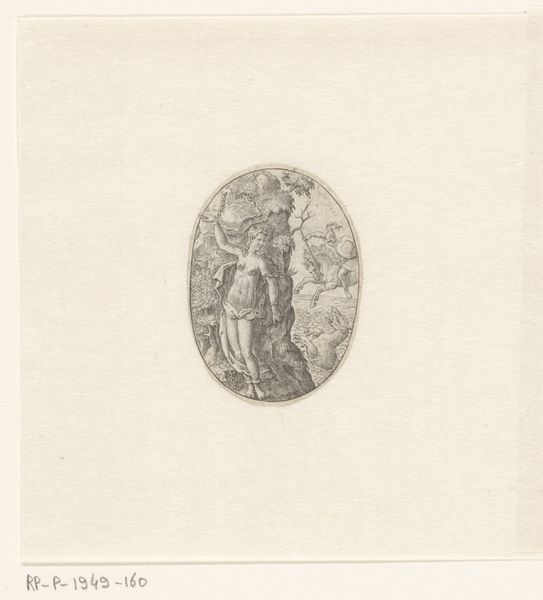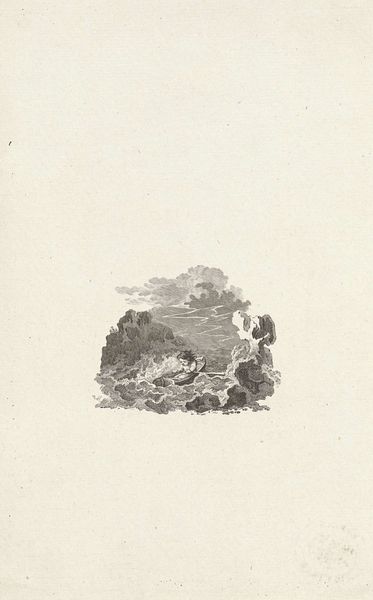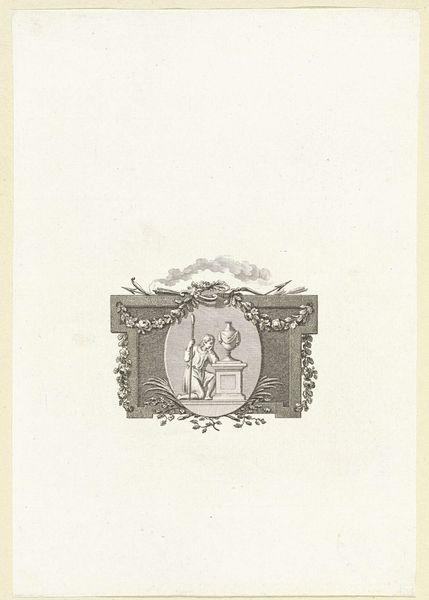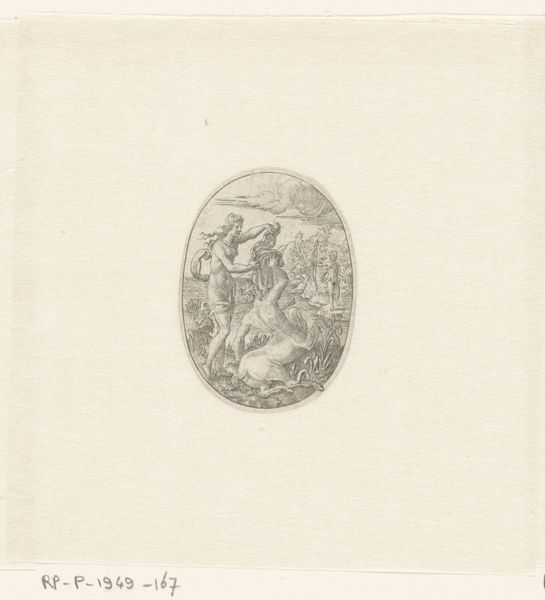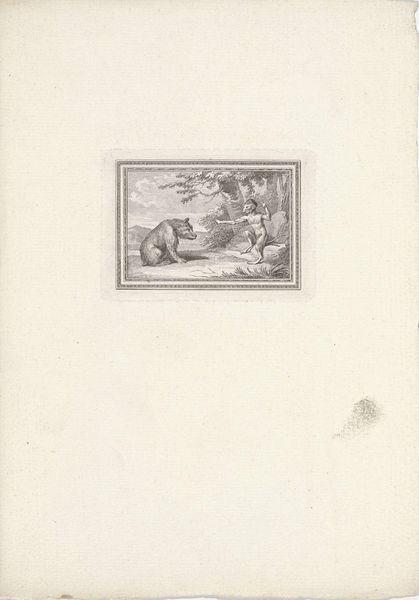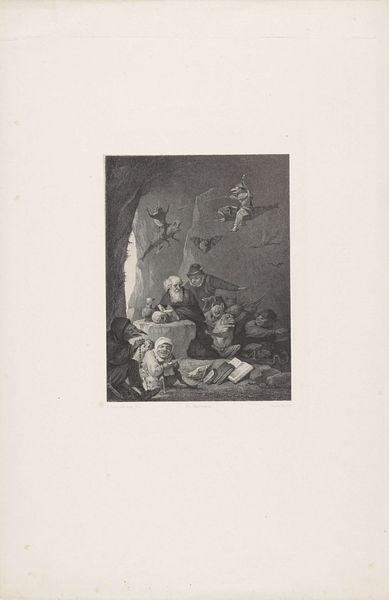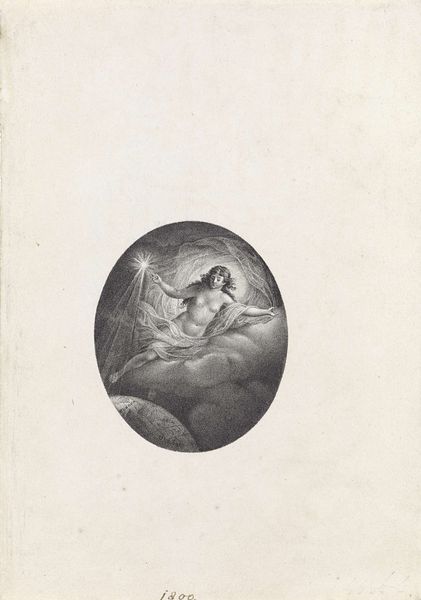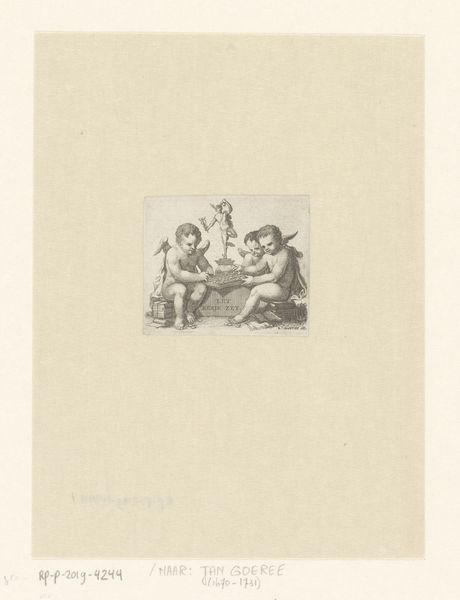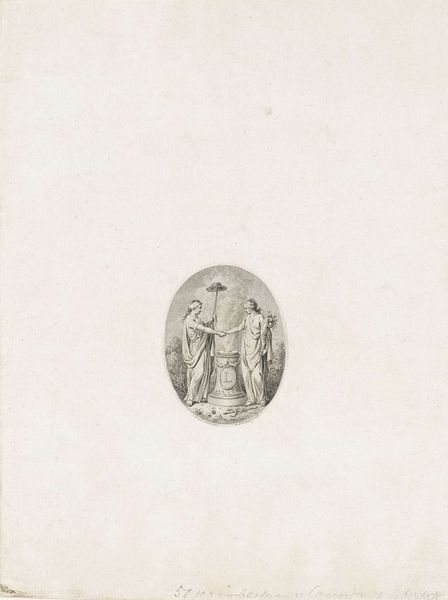
Dimensions: height 235 mm, width 153 mm
Copyright: Rijks Museum: Open Domain
Editor: Here we have Reinier Vinkeles’s title page for “De Waereld” from 1786. It’s an etching, engraving, and drawing depicting a scene inside a circle, sort of like looking through a magnifying glass. It’s… strange. There’s this almost classical sensibility, but the scene itself feels quite odd. What do you see in this piece? Curator: What immediately strikes me is the circle itself. It's an ancient symbol, the ouroboros, representing cyclical time and totality. Within that boundary, we see what appears to be an allegory. Look at the figures – a possible rendering of power, vulnerability, and maybe even subjugation. Editor: Subjugation, really? How so? Curator: Note the figure on their knees. It immediately draws the eye and seems to beg for some intervention. What's your impression of the dominating figure? Editor: I guess they do seem to be holding something, some sort of staff almost like a scepter, further confirming their authority. Curator: Precisely! Consider, too, the radiant light breaking through in the top left. Light is very rarely *just* light in works like these; it could be enlightenment, or perhaps even divine judgement, illuminating these actions, casting them in stark relief. This print may then be commenting on earthly power structures in 1786 through well-established symbolic and allegorical conventions. What do you think about the relation between the light and the human figures? Editor: That makes sense, and makes me think differently. I was stuck on the landscape style, which seemed so straightforward, almost romantic with the light breaking through, but I missed all the symbolism that might be happening in the figuration. It’s clearly more complex. Thanks. Curator: Symbolism offers insight into history itself and to our emotional and psychological perceptions. Art presents a wonderful reflection on culture!
Comments
No comments
Be the first to comment and join the conversation on the ultimate creative platform.
